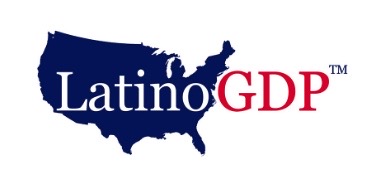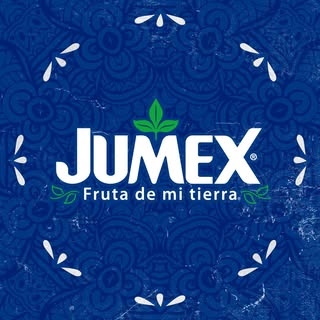Multicultural
Trust and Transparency in the Digital Age: What Matters to U.S. Hispanics

In a world where digital platforms mediate almost every interaction, trust has become the currency that decides whether people lean in or walk away. For U.S. Hispanics, who are among the most digitally engaged groups in the country, the expectation for transparency is especially high. They know when brands are authentic, and they know when they are not. By Sylvia Vidal - Consumer Insights & Strategy Consultant | Latin America Market Expert | Multicultural Marketing Leader
A New Branding Framework: The 5Bs

The fundamentals of modern branding and brand-building can be captured in the intertwined 5Bs, a new branding framework.
Cultural Authenticity as a Competitive Edge

Latin America is one of the most diverse and dynamic regions in the world. Each country carries its own blend of traditions, languages, music, and identities, yet consumers across the region share one common expectation: they want to see themselves reflected in the brands they choose. Authenticity isn’t just appreciated, it’s demanded.
California Latino GDP Surges Past $1 Trillion [REPORT]

If California Latinos were an independent state, their GDP would be the nation’s sixth-largest state GDP, larger than the economy of Pennsylvania or Ohio, according to the 2025 California Latino GDP Report by researchers at California Lutheran University and UCLA.
Latest Economic Report Reveals Persistent Wealth Gap for Latinas Despite $1.3 Trillion Contribution to U.S. Economy [REPORT]

On Latina Equal Pay Day, LatinoProsperity released a landmark report, Latina Wealth in America: Breaking Barriers, Building Futures, exposing persistent barriers tied to the depth of the Latina wealth gap.
ANA Bolsters Inclusive Marketing Practice with Launch of SeeAll Marketing Alliance

The Association of National Advertisers (ANA) announced the creation of the SeeAll Marketing Alliance (SAMA), an evolved Inclusive Marketing practice that will help brands accelerate unlocking new pathways to growth through inclusive marketing by connecting with each and every consumer. SAMA brings together the collective power and expertise of ANA’s existing inclusive marketing entities including the Alliance for Inclusive and Multicultural Marketing (AIMM), SeeHer, and the ANA Multicultural practice under a unified umbrella. Together they will deliver an expanded range of offerings to help marketers and their partners authentically represent and connect with each and every consumer with the goal of converting to brand sales and growth.
Tariffs at the Checkout: How U.S. Consumers Are Reacting to Price Pressure

Most U.S. consumers believe they are shouldering the cost of tariffs, and many are changing what, where and how they shop. L.E.K. Consulting’s research shows that nearly half are already paying more than they think is acceptable, with apparel, durable goods and beauty products most at risk.
ANA Unveils Winners of the 2025 Multicultural and Inclusive Marketing Excellence Awards

The Association of National Advertisers (ANA) announced the winners of the 2025 Multicultural and Inclusive Marketing Excellence Awards, honoring brands that are embracing the full spectrum of consumer identities and embedding inclusive practices to drive measurable impact—achieving both market expansion and brand loyalty. The awards span 20 categories such as Experiential Marketing, Rising Multicultural Segments, Hispanic, Data and Measurement Excellence, People with Disabilities and Neurodivergent Communities, African American, and includes a Best in Show. The awards were presented at an evening gala event during the ANA Multicultural & Inclusive Marketing Conference in Carlsbad, CA.
HMC Unveils New Study on U.S. Hispanic Beauty and Skincare: Belleza Latina Young Latinas have shifted from high-glam ideals toward a more natural skincare approach that blends cultural heritage with global influence

Skincare is taking center stage for U.S. Latinas. According to a new Hispanic Marketing Council (HMC) study, Belleza Latina: Uncovering What’s Shaping U.S. Hispanic Beauty & Skincare, nine in 10 Latinas ages 18 to 34 say clear, healthy skin is extremely important to them. In fact, 56% say their skincare routine is a source of confidence, and nine in 10 indicate they will pass on their beauty rituals to younger family members. And, when it comes to makeup, these young women are opting for a more simplified look, but 76% tap into the Latina “beauty trinity” of defined brows, lashes, and lips.
The State of the Hispanic-American Consumer 2025 [REPORT]

As the Hispanic population continues to shape the America's cultural and economic landscape, understanding their evolving attitudes and behaviors is more important than ever.
Hispanic Agencies Are Shaping America’s Story – Every Single Month of the Year

It’s Hispanic Heritage Month, which means brands are once again rolling out the usual once-a-year campaigns: colorful cliché visuals, a few Spanish words sprinkled here and there, maybe even a vibrant mariachi track. Cute? Sure. Authentic? Ni de cerca. By Daisy Cabrera
The Many Faces of the American Dream for Hispanics

When we talk about the American Dream, it often sounds like a singular promise: work hard, buy a house, raise a family, live free. But for Hispanic Americans, the dream is far from one-dimensional. It is shaped by heritage, rooted in family, and reimagined across generations. By Maria Lucia Parra
When Bilingual Latinos Buy, Who Gets the Credit?

Bicultural, bilingual Latinos are engaging with culturally relevant creative—sometimes in Spanish, sometimes in Spanglish, or even English in stories that reflect their real lives. By David Sánchez Y’s
Jumex Becomes First Mexican Brand to Sponsor a Division I Athletics Program

In a historic move for college sports and Hispanic representation, Vilore Foods announced the beloved Mexican juice and nectar brand known for its iconic blue can, Jumex, is now an official sponsor of The University of Texas at San Antonio's (UTSA) athletic program—making it the first Mexican brand ever to sponsor an NCAA Division I athletics program.
The State of US Feminism in 2025

What does feminism mean to U.S. women in 2025? The #MeToo movement is waning while toxic masculinity appears ascendant. Will the gains made by previous generations be lost? Our latest nationally representative survey of 739 women aged 18 and older uncovers a complex and often divided landscape. Views on feminism, gender equality, and social progress are shaped by significant generational, cultural, and racial differences. While the term “feminist” remains contentious, its ideals are supported by a vast majority of women.
Growth in 2025 & beyond ……

As corporate America continues to consider how/if to move forward by including all segments in their ads, strategies and programs, I have one word that says it all: growth. Reaching segments in culture - and by that I mean all segments, including White Non-Hispanic, Hispanic, Black, Asian, LGBTQ, MENA and others, is important to all segments. In fact, 55% of consumers believe it's very or extremely important for brands to authentically reflect and and every consumer in their advertising. This means that 5x more consumers are likely to purchase from a brand that authentically reflects each and every consumer, than those less likely to do so. Cultural inclusivity drives both long and short term growth. By Lisette ArsuagaLisette Arsuaga - Co-President, Co-CEO DMI Consulting, Co-Founder at Alliance for Inclusive and Multicultural Marketing
After GOP Gains, Democrats Reinvesting in Spanish Radio

Following a historic Republican showing among Latino voters in the 2024 presidential election, Democrats appear to be turning to one of the most trusted media sources in the Hispanic community to regain lost ground: Spanish-language radio.
New Research Designed To Help Marketers Better Under The Evolving Latino Community

We are inviting you to attend one or more of a free series of presentations from an in-depth, multiyear study, The National Latino Media Study, on the media habits, consumer preferences, language usage, and demographic insights of the 15.4 million Latino Readers across the United States, the audience of the National Association of Hispanic Publications. The NAHP is the oldest & largest Latino media organization in the USA, representing over 770 Latino newspapers, magazines, podcasts, websites, enews, and more, and weekly reaches a unique audience of 15.4 million across the USA. The research will be presented by Kirk Whisler President of LatinoLYTICS and Anita Grace, MBA, CEO of Grace Multicultural.
MAGNA Media Trials and The Shade Room Reveal How Black Culture Shapes Modern Brand Strategy [REPORT]

Black culture has long been the driving force behind what’s next —setting trends across music, food, fashion, technology, and more. Today, MAGNA Media Trials, in partnership with The Shade Room, the most engaged media platform covering Black culture, releases “Cultural Capital: What Black Culture Means for Modern Brands,” a global study that explores how Black culture influences consumer behavior and what it means for brands aiming to connect with today’s consumers.
Reaching Latinx Consumers: Insights on Ad Engagement & Personalization

In fact, Latinx consumers are very receptive to ads that reflect their interest and behaviors. More than two-thirds (67%) agree digital technology makes it easier to find products and services that are the right fit for them. Even more telling, 46% say they like it when ads show offers or discounts based on their online activity. When done right, personalization can change the narrative from invasive to helpful.



























